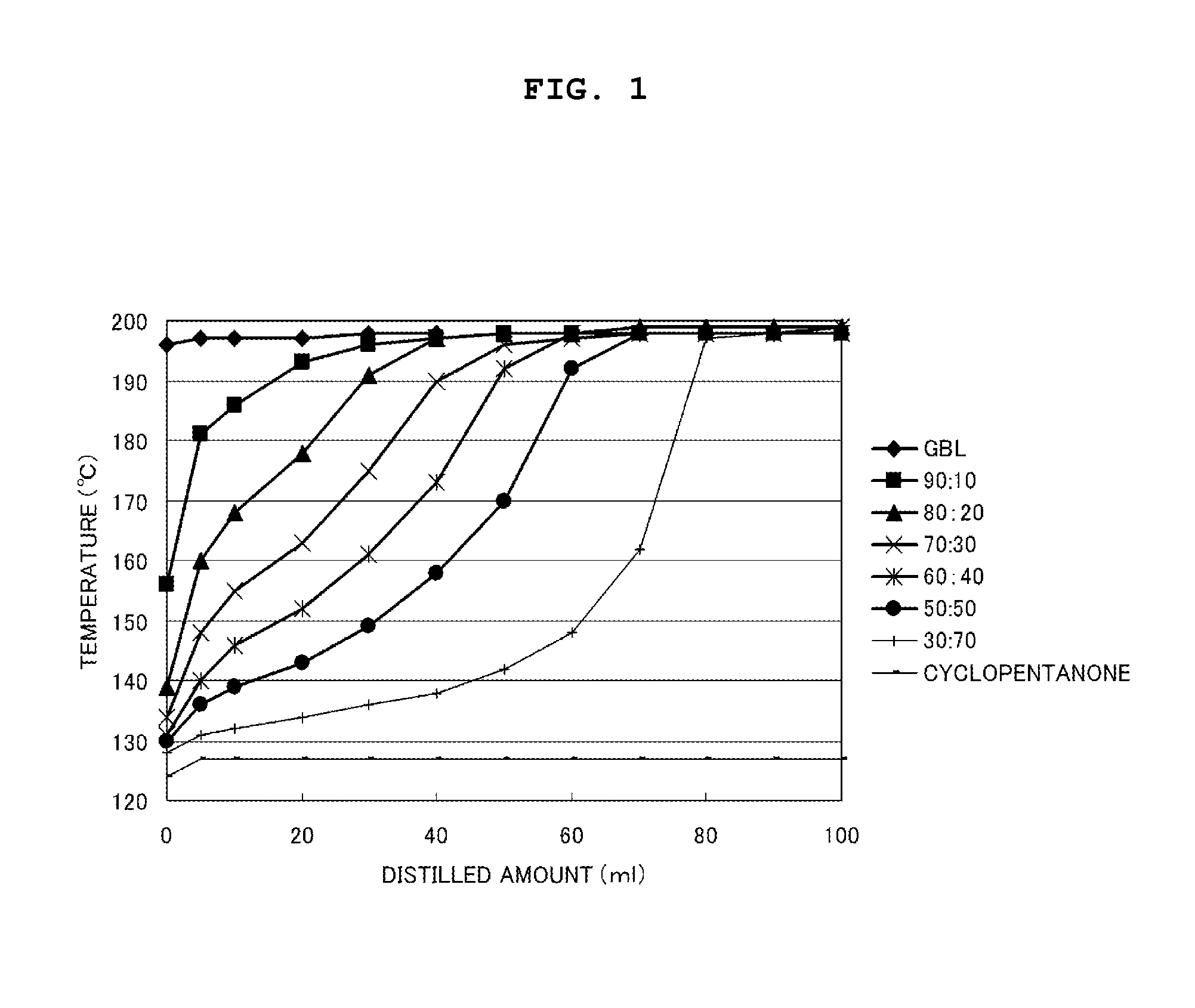Polyamideimide-Based Film Coating Composition
- Summary
- Abstract
- Description
- Claims
- Application Information
AI Technical Summary
Benefits of technology
Problems solved by technology
Method used
Image
Examples
example 1
[0036]50 Parts by weight (when converted into the polyamideimide resin) of the polyamideimide varnish (trade name: HPC5030, manufactured by Hitachi Chemical Company, Ltd.) (concentration of solid components; 32% by weight) in which a polyamideimide resin is dissolved as a binder in γ-butyrolactone was mixed with 15 parts by weight of epoxy resin, 15 parts by weight of molybdenum disulfide as a solid lubricating agent, 10 parts by weight of polytetrafluoroethylene, and 10 parts by weight of graphite. The resulting mixture was diluted by using γ-butyrolactone and cyclopentanone as a solvent to have the solid component concentration of 15% by weight followed by addition of a fluorine-based surface active agent and an anti-settling agent to produce a polyamideimide-based film coating composition. In this case, the volume ratio between the total volume of γ-butyrolactone in the polyamideimide resin varnish and γ-butyrolactone used for dilution and the volume of cyclopentanone was 70:30.
example 2
[0037]The polyamideimide-based film coating composition was produced in view of the Example 1 except that the volume ratio between the total volume of γ-butyrolactone in the polyamideimide resin varnish and γ-butyrolactone used for dilution and the volume of cyclopentanone in the Example 1 is changed to 50:50.
example 3
[0038]The polyamideimide-based film coating composition was produced in view of the Example 1 except that the volume ratio between the total volume of γ-butyrolactone in the polyamideimide resin varnish and γ-butyrolactone used for dilution and the volume of cyclopentanone in the Example 1 is changed to 95:5.
PUM
| Property | Measurement | Unit |
|---|---|---|
| Percent by volume | aaaaa | aaaaa |
| Percent by volume | aaaaa | aaaaa |
| Volume | aaaaa | aaaaa |
Abstract
Description
Claims
Application Information
 Login to View More
Login to View More - R&D
- Intellectual Property
- Life Sciences
- Materials
- Tech Scout
- Unparalleled Data Quality
- Higher Quality Content
- 60% Fewer Hallucinations
Browse by: Latest US Patents, China's latest patents, Technical Efficacy Thesaurus, Application Domain, Technology Topic, Popular Technical Reports.
© 2025 PatSnap. All rights reserved.Legal|Privacy policy|Modern Slavery Act Transparency Statement|Sitemap|About US| Contact US: help@patsnap.com

